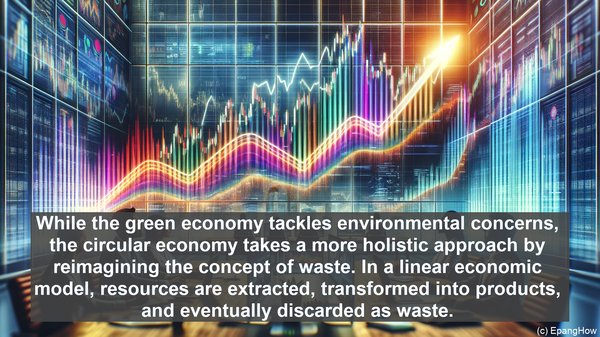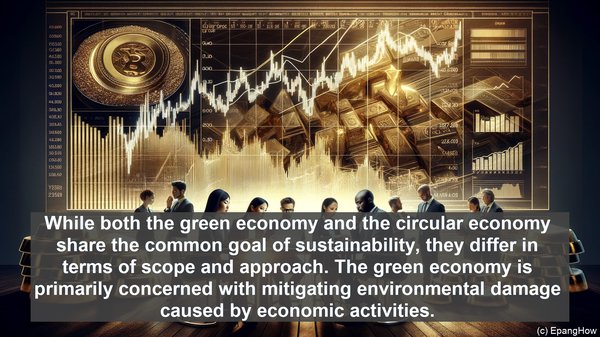Introduction: The Need for Sustainable Economic Models
Hello everyone! In today’s video, we’ll be exploring two essential concepts in the realm of sustainability: the green economy and the circular economy. As our world grapples with pressing environmental challenges, it’s become increasingly clear that traditional economic models need to evolve. The green economy and the circular economy offer promising alternatives, each with its unique approach. Let’s delve into the details!
The Green Economy: Focusing on Environmental Preservation
At its core, the green economy is centered around the idea of environmental preservation. It emphasizes the importance of using resources efficiently, reducing pollution, and minimizing waste. In a green economy, industries and businesses prioritize sustainable practices, such as renewable energy adoption, eco-friendly production methods, and responsible waste management. The goal is to achieve a balance between economic growth and ecological well-being, ensuring that future generations can thrive in a healthy environment.

The Circular Economy: Rethinking the Concept of Waste
While the green economy tackles environmental concerns, the circular economy takes a more holistic approach by reimagining the concept of waste. In a linear economic model, resources are extracted, transformed into products, and eventually discarded as waste. The circular economy, on the other hand, aims to create a closed-loop system, where materials are continuously reused, recycled, or repurposed. This not only reduces the strain on natural resources but also minimizes the environmental impact associated with waste disposal. In essence, the circular economy strives for a regenerative approach, where nothing is truly wasted.
Key Differences: Scope and Approach
While both the green economy and the circular economy share the common goal of sustainability, they differ in terms of scope and approach. The green economy is primarily concerned with mitigating environmental damage caused by economic activities. It focuses on sectors such as energy, transportation, and agriculture, aiming to transform them into more eco-friendly domains. On the other hand, the circular economy is a broader concept that encompasses not just environmental aspects but also social and economic dimensions. It seeks to create a system where resources are used efficiently, products are designed for longevity and recyclability, and new business models emerge, such as product-as-a-service or sharing platforms.

Complementary Strategies: Green Economy and Circular Economy
Rather than being mutually exclusive, the green economy and the circular economy can be seen as complementary strategies. For instance, in the context of energy, a green economy would prioritize the shift towards renewable sources like solar or wind power. Simultaneously, the circular economy would ensure that the materials used in renewable energy infrastructure, such as solar panels or wind turbines, are designed for maximum lifespan and recyclability. This synergy between the two concepts can lead to a more robust and sustainable future.
